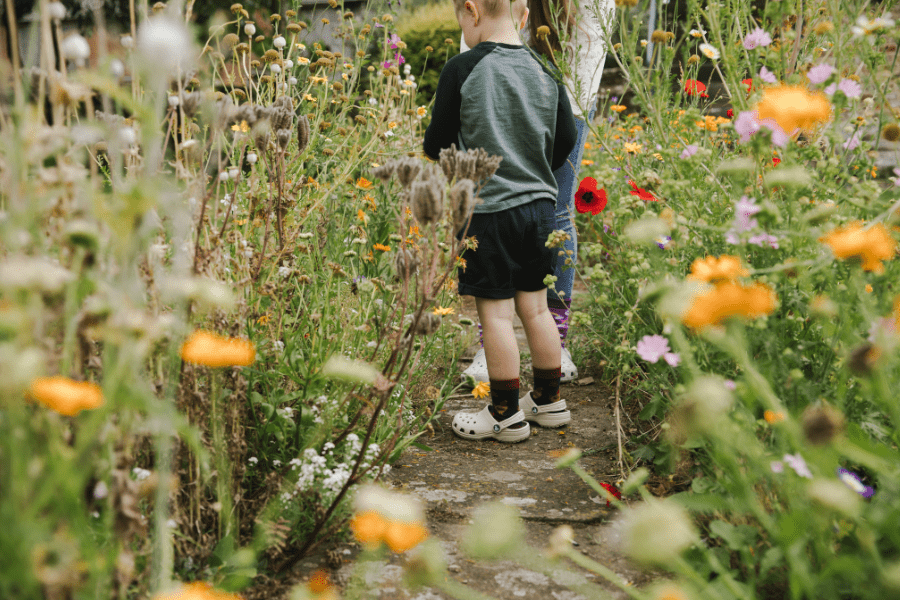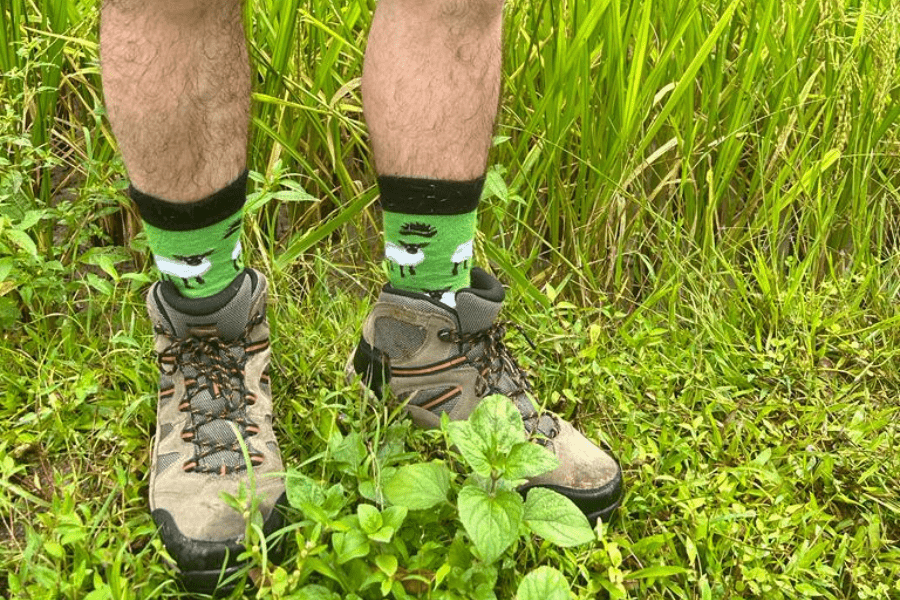Article: Bamboo improving air quality: Is bamboo healthy as well as sustainable?

Bamboo improving air quality: Is bamboo healthy as well as sustainable?
Bamboo is everywhere at the moment - clothing, furniture, flooring, even toothbrushes. Its popularity makes sense: it’s fast-growing, renewable, and marketed as one of the most sustainable materials out there. But bamboo has also been praised for its ability to improve air quality and create healthier environments.
So, is bamboo as good for our health as it is for the planet? In this article, we’ll explain how bamboo is sustainable, answer the question ‘does bamboo clean the air?’ and ultimately explore whether bamboo is healthy as well as sustainable! Let’s get into it.
How is bamboo sustainable?
We’ve answered the question ‘is bamboo good for the environment?’ and discussed the sustainable properties of bamboo in the past. In fact, we haven’t really stopped banging on about it, but that’s because it is so much more sustainable than alternative materials out there!
In case you’ve missed our previous work on bamboo and its sustainability (are you living under a rock?) let’s explore some of the reasons why bamboo is championed as one of the most sustainable materials on the planet:
-
Fast growth: Bamboo is the fastest growing plant on earth, growing around four ft a day! This rapid growth, paired with the fact that it is self-regenerating, helps to maintain soil health and completely prevents us running out of it!
-
Low environmental impact: On top of being a renewable resource, bamboo has an extremely low environmental impact when compared to other materials such as cotton. For example, bamboo requires a third of the amount of water needed to grow cotton, and 200 times less water to produce the same amount of fabric! On top of this, bamboo does not require pesticides to grow successfully, and needs minimal maintenance compared to other crops.
-
Carbon sequestration: Bamboo can absorb a huge amount of carbon dioxide, and releases oxygen. In fact, studies have found that one hectare of bamboo absorbs around 17 tonnes of carbon per year!
Bamboo’s fast growth, minimal resource requirements, and impressive carbon absorption make it a clear choice for sustainability. It’s a material that stands out for its environmental benefits, offering a practical way to reduce our impact on the planet.
Does bamboo improve air quality?
Bamboo is highly effective at improving air quality, both outdoors and indoors. Its ability to absorb carbon dioxide and release oxygen is unmatched, due to its rapid growth rate and dense biomass. Unlike most trees, bamboo can grow up to four feet in a single day, which allows it to sequester more carbon dioxide per hectare compared to traditional forest species.
Beyond its carbon sequestration capabilities, bamboo also filters out harmful pollutants, including formaldehyde and volatile organic compounds (VOCs), which are commonly found in indoor air due to chemicals within furniture, paint, and cleaning products. Bamboo products, such as activated bamboo charcoal, enhance this capability, as they are highly effective at trapping pollutants and moisture, further improving indoor air quality.
When compared to other popular air-purifying plants like peace lilies, snake plants, and pothos, bamboo often stands out due to its efficiency, numerous benefits and ability to thrive in various different environments with minimal maintenance.
Is bamboo always healthy?
While bamboo is celebrated for its sustainability, it’s not always as healthy as it seems. One concern lies in the processing of bamboo for furniture, textiles, or flooring. Many bamboo products undergo treatments with chemicals that can release volatile organic compounds (VOCs) into the air, potentially affecting air quality. To avoid this, look for products labeled as low-VOC or certified by reputable eco-standards, which ensure safer processing methods.
How to incorporate bamboo into everyday life
Bamboo is a very versatile material, making it easy to introduce into different aspects of everyday life. Let’s explore some simple ways to include it in your lifestyle and home:
-
Furniture and home decor: Bamboo is becoming an increasingly popular choice for furniture, blinds and flooring due to its durability and sustainability.
-
Clothing: Because of its softness, stretch and other comfort properties, bamboo is also being more and more used in clothing, socks and accessories. It is thermo-regulating, moisture wicking and incredibly soft, making it a popular choice for these items, and its sustainable properties are also a key deciding factor for many environmentally-conscious shoppers.
-
Personal care: Bamboo personal care items such as bamboo toothbrushes and toilet rolls are simple swaps towards sustainability and less waste.
-
Kitchen and food storage: Bamboo is used for many eco-friendly kitchen items like cutting boards, utensils, and reusable food wraps.
-
Indoor plants: Bamboo is an excellent low-maintenance plant to brighten up indoor spaces. They thrive in low light conditions and need very little water, making them ideal for busy lifestyles, and are able to purify the air of certain chemicals associated with paints and new carpets.
How Hedgy can help
At Hedgy, we are passionate about sustainability and the health of our planet and its inhabitants. Because of this, all of our socks are made from bamboo and other eco-friendly vegan materials, and we don’t use harmful chemicals in our production.
We proudly contribute 10% of the profits from every sale to support wildlife charities. So, by choosing bamboo for our socks, we are not only benefitting the planet, but also giving money to charitable causes too!
Explore our collection of wildlife themed socks and welcome the health benefits of bamboo today!
